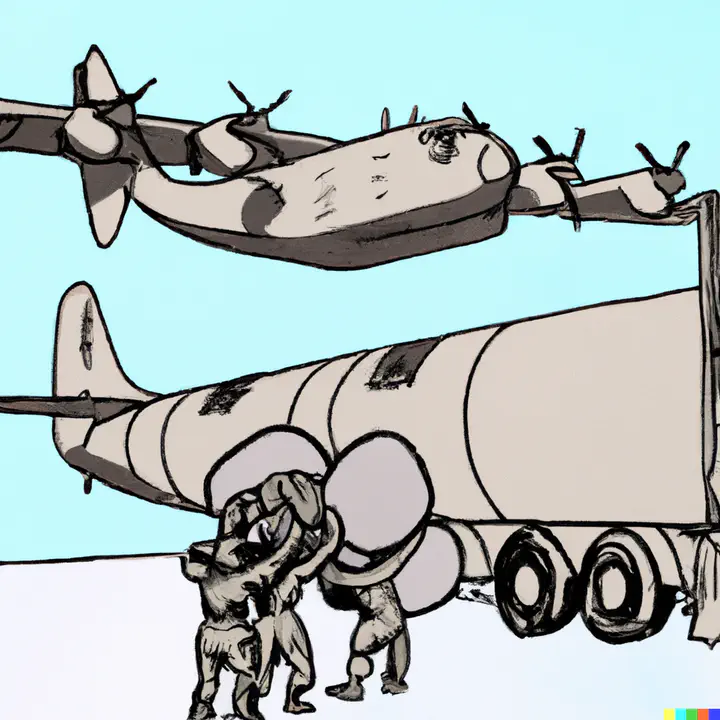Military Assistance Providers
 Illustration of soldiers loading a military transport plane (Nick Lotito × DALL·E).
Illustration of soldiers loading a military transport plane (Nick Lotito × DALL·E).Research in civil-military relations has identified several pathways for foreign influence over the armed forces. Poorer countries may depend on military aid to meet basic security requirements. Even simply permitting arms sales to a country may foster a degree of dependence on the provider, especially regarding more complex weapons platforms (requiring access to highly complex spare parts and expert maintenance) and where interoperability concerns exist (e.g., Soviet vs. NATO suppliers in the Cold War era). Foreign training and education programs may exert a profound influence on the practices, beliefs, doctrines, and organizational cultures of recipient military forces. These influences are especially profound in postcolonial countries, where indigenous military organizations were created more recently and under the pervasive influence of, and material dependence on, great powers.
The Military Assistance Providers (MAP) dataset identifies providers and recipients of foreign military assistance over time. The data rely on open sources, including electronic databases (e.g., Nexis Uni), media reports, and academic research; therefore, it is most accurate to describe the data as reflecting the public record on military assistance, to the possible exclusion of covert support. MAP provides panel data describing the primary and secondary providers of three categories of military assistance: financing, training, and armaments. Initial data collection will focus on a 50-year period, from 1970 to present, with plans to extend backwards to 1950 in future iterations.